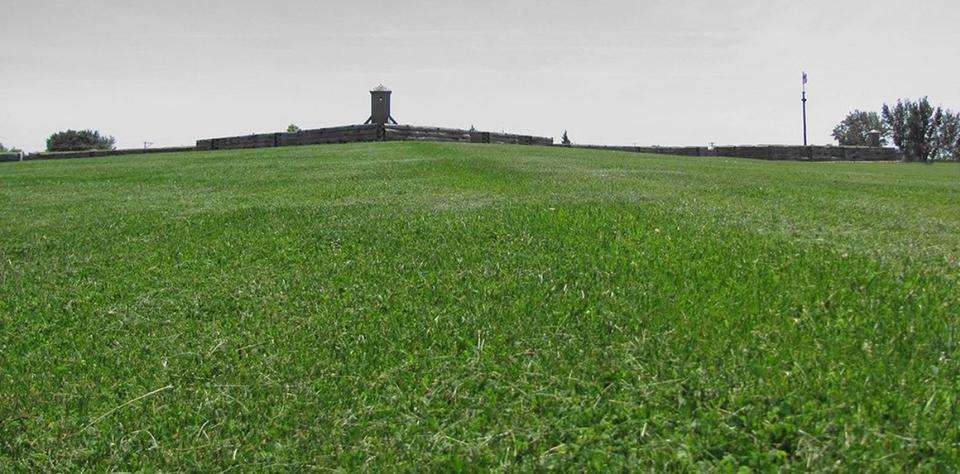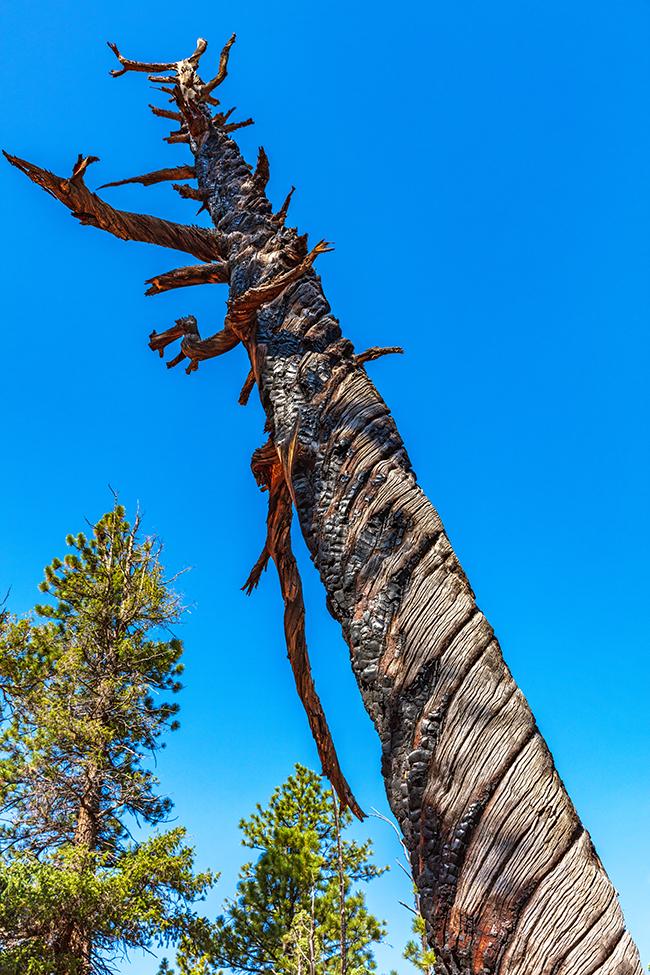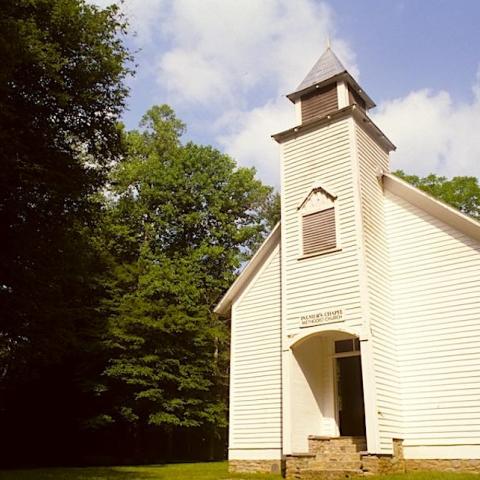
Red Spouter in the winter, Yellowstone National Park / Rebecca Latson
It’s time to test your knowledge about the 424 units of the National Park System. How much do you really know? Try answering these quiz questions before looking at the bottom of the piece. You might learn something totally new from the questions and bits of trivia. There’s so much to learn about the parks!
1. A walk along the Fountain Paint Pots nature trail at Lower Geyser Basin in Yellowstone National Park will bring you into contact with Red Spouter. True or False: Red Spouter exhibits the behavior of all four thermal features (hot spring, mud pot, steam vent, geyser).
a) True
b) False

Looking a little droopy, Organ Pipe Cactus National Monument / NPS - B. Cherry
2. Take a hike at Organ Pipe Cactus National Monument and you might notice some quirky cacti, with arms drooping down instead of pointing up. True or False: this is due to lack of enough water.
a) True
b) False

An itty bitty teeny weeny Western toadlet, Mount Rainier National Park / NPS File
3. Watch your step when hiking around Mount Rainier National Park! You might encounter an itty bitty Western toadlet. Did you know, female Western toads can lay up to ___ eggs?
a) 15,000
b) 6,000
c) 25,000
d) 11,000

A gentle slope around the fort, Fort Stanwix National Monument / NPS File
4. Have you ever noticed a gently sloping earthwork around the fort while exploring Fort Stanwix National Monument in New York? That slope protected the bottom of the fort walls from cannon fire and is known as a ___.
a) Hillock
b) Pitched ridge
c) Barbican
d) Glacis

One big salamander! Great Smoky Mountains National Park / NPS File
5. Known by nicknames such as snot otter, devil dog, or Appalachian river wizard, hellbender salamanders are one of 30 species of salamander found within Great Smoky Mountains National Park. True or False: hellbenders are the largest salamander in North America.
a) True
b) False

Western hognose snake, White Sands National Park / NPS File
6. “One of the last warnings some, but not all, snakes will give a predator before biting them is to strike a defensive posture then lunge forward in the predator’s direction.” This is called ___.
a) Fake attack
b) Bluff striking
c) False lunging
d) Bluff biting

Can you name this speleothem seen at Wind Cave National Park? NPS File
7. Shown in the image above at Wind Cave National Park is a thin sheet of calcite that precipitates and floats on the surface of Calcite Lake in the deepest part of the cave. This speleothem (cave formation) is also known as ___.
a) Calcite paper
b) Calcite rafts
c) Calcite candy bark
d) Calcite white chocolate

Javelina in the prickly pear, Grand Canyon National Park / NPS File
8. Hike along the trails of Grand Canyon National Park and you might encounter an interesting little creature that looks like a pig, but is not. Javelinas, also known as the ___, are commonly confused for a wild pig.
a) Musk hog
b) Tusked boar
c) Collared peccary
d) Cactus eater
9. True or False: Columbian mammoths, the remnants of which may be viewed during a visit to Waco Mammoth National Monument in Texas, walked on their tiptoes.
a) True
b) False

A view of "The Mountain" along the Pinnacle Peak Trail, Mount Rainier National Park / Rebecca Latson
10. According to the USGS and Mount Rainier National Park, the main portion of a volcano is known as a/an ___.
a) Edifice
b) Cryptodome
c) Littoral cone
d) Tumulus
Trivia

Twisted and charred, Bryce Canyon National Park / Rebecca Latson
If you’ve ever visited Bryce Canyon National Park, you’ll probably have noticed that a number of trees in the park are twisted! Some tree bark twists to the left, and other tree bark twists to the right. Some even change direction during their lifespan. Why this occurs is a mystery, although it’s believed genes, water, and stress probably play a part. There are several theories as to why this happens. The leading theory is that one side of the tree’s root system has more access to water than the other side – like a tree clinging to an eroding slope. Or perhaps one side of a crown has more access to sun. “Growth will then follow a spiral pattern to evenly distribute water and nutrients up to the crown (and vice-versa back down). Dyed sap injected into stem bases and roots has even shown this spiraling distribution pattern at work.”
“Another leading theory considers the stresses of wind and gravity. There is a helical stress and torque imposed on both leaning and wind-exposed trees. Wind-exposed sites are also likely to create asymmetrical crowns and root conditions. Spiral grain is thought to provide a flexibility advantage to trees exposed to bending and torsion.”

Sparring, or just playing? Katmai National Park and Preserve / Rebecca Latson
During a visit to Katmai National Park and Preserve, you may have the chance to see bears playing in the Brooks River … or are they fighting? How can you tell the difference? “When bears play, there is rarely any vocalization and playing can go on for an extended period of time. In contrast, when bears fight, they tend to also vocalize and the encounter is generally brief.” In the case of the image above, these two bears were sparring for a prime fishing spot below Brooks Falls and their encounter was brief.

Reenactors in the barracks at Fort Larned National Historic Site / NPS File
Back in the day at Fort Larned in what is now Fort Larned National Historic Site in Kansas, it was a smelly place to live. “Fort Larned, along with many other forts throughout the United States would have a distinctive bad smell to them. Soldiers were required by U.S. Army standards to bathe once a week but at Fort Larned, soldiers would bathe in the river. Though this doesn’t sound that bad, it was downstream from a pig pen and an open-bottom privy at the Sutler’s complex. This means that though the water was clear, it was far from clean. Soldiers were also required to have as good hygiene as possible and would have to wash their feet twice a week as well as wash their hands once a day according to U.S. Army standards.” There’s a story about the surgeon walking into the barracks and almost getting sick because it smelled so bad. “Because of this, he ordered vents to be put in the ceiling of the barracks to alleviate the stench and the ‘bad air’ thought to cause sickness.”
Quiz Answers
1a True
Red Spouter, created as a result of the Hebgen Lake earthquake, exhibits the behavior of all four thermal features. “In the spring and early summer, it is a muddy hot spring that may seem like a geyser as it splashes reddish water several feet high. As the water table lowers in late summer and fall, Red Spouter seems more like a big mudpot, and then a hissing fumarole.” The image at the top of this article was captured during the late winter, when it looked like a very liquid mudpot.
2b False
You may see some saguaro or organ pipe cactus arms droop down and this is due to temperature. “When part of the cactus gets too cold, it will start to droop, but when it gets warm again, the cactus will start growing upwards once more.”
3a
According to the National Park Service, female western toads can lay up to 15,000 eggs (some other sites say between 12,000 and 17,000). The tadpoles grow to tiny baby toads known as toadlets. “Toadlets leave the ponds where they were born and reach adulthood in terrestrial habitats, sometimes occupying dens dug by other animals in rocky environments.”
4d
At Fort Stanwix National Monument, the grassy slope beyond the fort walls that protected the bottom of those walls from cannon fire is known as a glacis.
5a True
“Hellbenders are the largest amphibians in North America and can be found crawling around the bottoms of clear, silt-free mountain streams in the eastern and central United States. They are generally nocturnal, spending most of the day under rocks on the stream floor, emerging at night to hunt. Hellbenders breathe primarily through their skin and rely on cool, well-oxygenated flowing water.”
6b
“Bluff striking is when a snake is in a defensive strike posture then lunges forward in the predator’s direction. Snakes usually do this with their mouth closed in a last-ditch effort to scare away predators … western hognoses, western black-necked garter snakes, Sonoran gopher snakes are all known to use this bluff strike tactic,” and you might see these snakes while hiking around White Sands National Park.
7b
“Calcite rafts are thin sheets of calcite that today are precipitating and floating on the surface of Calcite Lake in the deepest part of the cave. The thin rafts float on the surface due to surface tension before eventually sinking when they become too heavy or when the pool is disturbed. Calcite rafts which litter the floor of some dry areas of the cave are evidence that these passages were once flooded too.”
8 a and c
Javelinas are also known as musk hogs or collared peccaries. They get the musk hog moniker from the strong odor they release when alarmed, excited, or trying to communicate. Native to the southwest United States, these animals are equipped with short tusks which can be used for self-defense, communication (rubbing their tusks together to create a chattering noise) and to pry open plants like prickly pear cactus. Javelinas also eat lizards, rodents, fruit, mesquite beans, agave, roots, and tubers. To learn more about these denizens of the Southwest, click here.
9a True
The Columbian mammoth walked on its tiptoes, with an internal sponge-like pad behind the bones of their feet cushioned their immense weight. To learn more about these behemoths, click here.
10a
“In geologic terms, the ‘edifice’ is the main portion of a volcano built by eruptions of lava, tephra, pyroclastic flows, lahars, and other deposits. Modern Mount Rainier is relatively young, around 500,000 years old, and its edifice includes rocks of many ages. Some of the youngest lava flows are under the Emmons Glacier (2,200 years ago) and on the summit crater. Mount Rainier’s edifice is built on a foundation of the much older Cascade Range, which began forming 10 million years ago.” Tip: nice views of Emmons Glacier may be seen in the Sunrise area of the park.




 Support Essential Coverage of Essential Places
Support Essential Coverage of Essential Places






